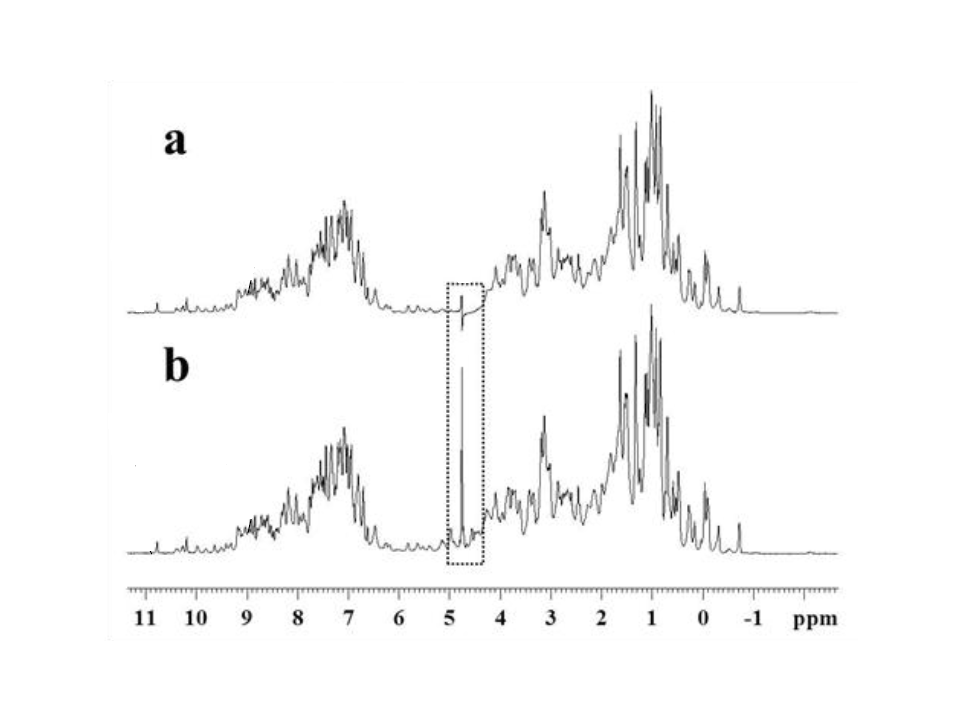posters 5th Asia-Pacific NMR Symposium 2013
Water Signal Control in NMR (#233)
Most of the popular biomolecular NMR solvent signal suppression methods are based on the application of selective/soft pulses, which causes significant information loss due to unquantifiable suppression and loss of the contiguous-to-water resonances. The newly developed WaterControl and NOESY-WaterControl methods provide a well-defined quantifiable and extremely selective solvent signal control/suppression with no or minimal loss of features of interest. As shown in Figure 1, a ‘null’ region can be clearly observed on the PGSTE-WATERGATE spectrum (Figure 1 (a)) while there is no ‘null’ region on the WaterControl spectrum (Figure 1 (b)).

Reference: 1. Zheng & Price, Prog Nucl Magn Reson Spectrosc, 56 (2010) 267; 2. Piotto et al., J Biomol NMR, 2 (1992) 661; 3. Liu et al., J Magn Reson, 132 (1998) 125.